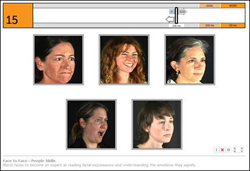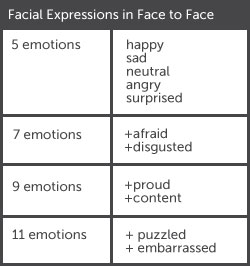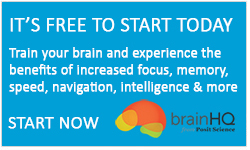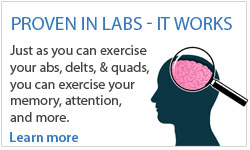![]() Imagine you make a joke at a wedding or some other event. You notice that the woman sitting next to you makes a face. Does it mean she thinks your joke was inappropriate, confusing, or funny? In circumstances like these it is important to be able to read facial expressions – especially if they flash by quickly. The manner in which you interpret a person’s facial expression will usually determine how you choose to react. Interpreting the person’s facial expression correctly can make the difference between a socially awkward situation and a socially satisfying moment. It is these moments – satisfying or awkward – that ultimately define our self-confidence, comfort in social situations, and our overall social savvy around other people.
Imagine you make a joke at a wedding or some other event. You notice that the woman sitting next to you makes a face. Does it mean she thinks your joke was inappropriate, confusing, or funny? In circumstances like these it is important to be able to read facial expressions – especially if they flash by quickly. The manner in which you interpret a person’s facial expression will usually determine how you choose to react. Interpreting the person’s facial expression correctly can make the difference between a socially awkward situation and a socially satisfying moment. It is these moments – satisfying or awkward – that ultimately define our self-confidence, comfort in social situations, and our overall social savvy around other people.

Our Face to Face exercise is designed to sharpen the social cognition network in your brain by pushing you to correctly interpret facial expressions.
In the Face to Face exercise, you are briefly shown a face on screen and you must decide what expression you believe the face is showing. Following that you will be shown a set of faces and you must choose the face that you believe shows an identical expression to the first face that was displayed. If you think the first person looks happy, for instance, you will then need to find the face in the second set that also appears happy and select it.
The Face to Face brain training exercise will grow more difficult in the following ways:
- The number of emotions will gradually increase from 5 to 11.
- The expression’s intensity will decrease with easier levels providing more obvious expressions and harder levels providing more subtle variations.
- There will be an increasing number of faces from 3 up to 6.
A common question we receive for the Face to Face exercise for brain health is: how did you determine which emotion to assign to the faces? Here is our process:
- Each actor was asked to make a face demonstrating a particular emotion.
- Both scientists and citizens were asked to rate each actor’s expression. If this series of people could not agreed on which expression the photo demonstrated then the photo was cut. If they agreed then the photo moved on in the selection process.
- The photos were reviewed by a facial expression recognition expert.

You might disagree with a particular classification even despite this meticulous process. You might, for example, see a face you think is sad that has been assigned as “neutral”. That doesn’t necessarily mean you are wrong (even though the exercise might suggest you are!). However, you are seeing the face differently than the majority of people. It was important for us to include challenging expressions. If the expressions were too simple then the exercise wouldn’t challenge your brain to perceive more and recognize more nuance – instead it would allow your brain to relax!






 English
English
 Français
Français


